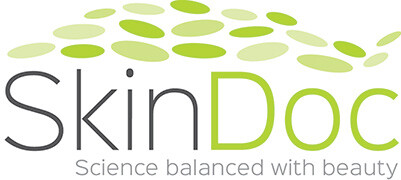
Perception Drift
Do you have Perception Drift?
This was one of the topics discussed at the ASCD, Sydney 20-22 September 2019 by Dr Sabrina Fabri, Dermatologist and Cosmetic Surgeon from San Diego, USA.
The aim in aesthetic dermatology is to preserve your beauty but not chase every line and wrinkle. Some patients cannot remember what their baseline photo of themselves looked like. As a result some young women and to a lesser degree older women will come back for more treatment often to the same area as they cannot see the difference or improvement from the baseline photo.
An example would be a young female age 26 who will request she wants her lips to look natural but a little fuller. A suitable dermal filler for the lips would be given in appropriate amounts and sites into the upper and lower lip but she still comes back and wants more filler to the lip despite our recommendation that the shape, curvature, ratios and fullness of her lips are optimal. This is called perception drift.
How are patients aesthetically evaluating their faces?
As human beings we have the distinct and unique ability to discriminate what makes something beautiful or desirable. We also have the ability to detect what we don’t like. We tend to be attractive to pleasant stimuli such as foods and mates and avoid unpleasant stimuli such as pain. Judgements of beauty are based on sensory, emotional and intellectual qualities we have as human beings. Our aesthetic judgements may be culturally conditioned to some extent.
How does the evaluation process of the face change after cosmetic procedures?
We instinctively do local processing for a small area of the face such as the tear trough. This is followed by a global processing of the entire face.
As doctors we are also aware of body dysmorphia.
What is body dysmorphia disorder or BDD?
This is a psychiatric disorder characterized by excessive preoccupation with imagined defects in the person’s physical appearance. In the field of dermatology this may include a minor blemish on the skin, mild acne, facial lines, thinning hair or a tiny scar in the eyes of the dermatologist which objectively is almost imperceptible but to the patient it is a big defect. This leads to anxiety and stress about the perceived defect that lead to compulsive behaviours. Examples would include excessive grooming, constantly seeking reassurance from others about the perceived flaws, constantly checking their appearance in the mirror or trying to hide the imperfections. These people are more likely than others to present to the dermatologists and request to undergo cosmetic procedures.
As doctors we have a duty of care to ensure we manage these people appropriately. As dermatologists we are well aware we may need to engage the support of other clinicians as treatment may include psychotherapy and cognitive behavioural therapy.
Cosmetic procedures can make body dysmorphia disorder worst. They are often not happy with the outcome of the procedure. If they are, they may start to focus attention on another part of their face or body and become pre-occupied trying to fix the ‘new defect’.
People with BDD have increased local processing while maintaining some global processing. They tend to focus more on the details of their appearance rather than the overall features. This is highlighted in snapchat dysmorphia.
What is Snapchat Dysmorphia?
In 2018 Dr Esho in London coined this term to describe the growing number of people undergoing surgical cosmetic procedures so that they look more like the edited and heavily filtered copy of themselves that they often share on social media.
Unfortunately in the social media obsessed world we live in today young people’s self-esteem can be hurt. This can lead to a dangerous trend of people feeling insecure about the way they look as they feel they are not beautiful or attractive as their own filtered images.
Snapchat dysmorphia is having more impact among youths in Asia with 8% of young people born after year 2000 having had plastic surgery. Alteration to the epicanthic fold in Asians to create a double eyelid are now “as easy as getting a haircut”. Social media environment is unfortunately reminding young people that they need to be beautiful to be noticed.
What can we do as dermatologists or doctors in general? Firstly we need to show we care about them and their general well-being. I am noticing I am spending more time counselling and reassuring these people that they are not alone. Help them with visual retraining of themselves. We view the entire face and other areas of concern at the initial consultation. Each year we compare the concurrent photos to the initial visit. We spend less time chasing flaws and more time enhancing our patients’ unique personal features.
Is there a perception drift in the provider? I have noticed as I attend cosmetic conference there is a large number of cosmetically enhanced attendees particularly at conferences with large numbers of non-doctor injectors. In contract at aesthetic conferences where the attendees are predominantly doctors such as ASCD there are lower numbers of these people. At non-cosmetic dermatology conferences such as the ACD in Australia and the AAD in United States there are none or very few these people.
Should we be concern about perception drift in the provider? The answer is yes. As a dermatologist we have a duty of care to all patients whether the presenting problem is cosmetic or non-cosmetic. More importantly as provider of aesthetic treatments we need to know when to stop. If we do not recognise the need to stop a new baseline is constantly reset in both the patient and the provider. A previous insignificant flaw or feature is now fixated upon and now in the eyes of the patient and the provider the aim is erase that wrinkle, fold or hollow in the skin.
At SkinDoc the aim is create the best version of you. This involves a detailed consultation followed by assessment and treatment planning using the full face approach. For more information contact us at SkinDoc.
